From Elation to Desolation: India's World Cup Final Agony
- Rudraksh Kikani

- Nov 28, 2023
- 10 min read
India 148/3, skipper Pat Cummins runs in to bowl the third delivery of the 28th over, Virat Kohli on 54 is on strike. BOWLED HIM! Kohli nicks it onto his stumps and ninety thousand fans sit in silence. One bowler has silenced and broken a billion people's spirits. Kohli in disbelief stands there for a while, looking at the pitch, looking back at the stumps. He puts his head up in the air in agony and walks off. As he walks back, his face says it all, it's over, India has lost the World Cup final.
I apologize if this opened your wounds. It's been over a week, and I still think about this dismissal every day. Virat Kohli was stitching together a masterpiece, a knock that would've capped off a historic World Cup campaign for himself and his team perfectly. Where did it all go wrong for the hosts? How did underdogs Australia beat one of the greatest one-day teams to ever compete in a World Cup? Surely can't just be the pitch.
SELF/CARELESS
Mitchell Starc got Shubman Gill in the 5th over after a brisk start. But that didn't stop the Indian skipper from continuing his onslaught in the powerplay. Virat too, walked in and hit Starc for three consecutive fours. When Rohit was going all guns blazing, it felt as if India had picked up where they left off and it was going to be another batting masterclass from the 10-win side. India was 66/1 after 9 overs, and Maxwell came in to bowl the final over of the powerplay. Rohit saw it as an opportunity to get a big over to conclude the first powerplay. He hit Maxwell for a six and a four off his first two balls, and India was flying high, but that was perhaps Rohit's sign to cool down. Instead, he stepped out and tried to hammer another one into the stands. He miss-hit the delivery, and Travis Head took an outstanding catch on the edge of the 30-yard circle.
Going for 47 off 31, Rohit not only maintained the batting template he had followed through the tournament but also got out similarly, with his fault, mistiming an ordinary delivery. Rohit's knocks were one of the factors fueling the team's dominant run, but had he been too careless at the final hurdle? If Kohli, Iyer, and Rahul had pulled through and got India to a big score like they did throughout the World Cup, this knock of Rohit would've been hailed as one of the greatest World Cup final performances. This perhaps is hindsight, but as a senior captain of the side, Rohit's responsibility was to build a good partnership with Virat and get India to a good position for a few overs. Had they batted together for another 10-15 overs, I am one hundred percent certain India would've been champions. Rohit was batting in another dimension this World Cup. It appeared as if he was batting on a different wicket than his partners, and that is why I wanted him to bat deep in all games, especially the finals. Many people and experts have been calling his knocks selfless, and I agree, but there is a point after which selfless knocks become careless. After 10 runs off 2 balls, there was no need to step out and try another big shot on the very next ball. It is said that batsmen are most vulnerable after they have hit a couple of big shots because the next ball will determine the longevity of their knock.
Rohit's final knock was more careless than selfless. And a 50-over game is not won or lost in the first 10 overs. What happens between 11-40 overs determines the fate of a team. And Rohit hasn't done that a lot this World Cup. He didn't need to, and his role was different, but World Cup finals differ from ordinary games, a World Cup final is a different animal. The same players performing extraordinarily in league games falter and crumble under pressure. This is the game where big players stand up, and India needs its captain to stand up and take the lead. Roles, manner of playing, and those things don't matter here, the only thing that matters is winning. The Ahmedabad wicket too demanded that.
The playing conditions changed drastically after the first powerplay. The ball gripped much more and slower balls were virtually impossible to put away. And Australia's magnificent fielding made even singles and doubles scarce. You could see how tough KL Rahul found it to get going, he was struggling to bat at a strike rate of 50, and he never really opened and scored freely throughout his knock. Virat too was a victim of that sluggish wicket. He was batting well and was untroubled through his knock, batting in a typical Virat fashion, around a run-a-ball, and his dismissal was both bad luck and a technical weakness. More so bad luck, Travis Head faced many such deliveries in his first 20-30 balls, and none of them hit the stumps, most of them ran to the boundary, and that is why Virat stood there in so much disbelief and disappointment. This is where set players need to capitalize on their start and make it big for the team.
KL Too Slow?
When Virat Kohli fell, India was stranded at the crease with their last two experienced ODI batters, KL Rahul and Ravindra Jadeja. When Virat got out, KL was already batting on 37 off 67 deliveries with just one boundary at a strike rate of 54.5. He had been on the crease for nearly 18 overs, and just never got going. Traditionally, India followed the template of batting around Kohli through the World Cup, all other batters went hammer and tongs whilst Kohli held one end to the end. But as I said, it's the World Cup final, and all templates and methods go down the drain, what matters is winning. But did KL bat too slow which ultimately put the team at risk? Let's see what the stats say.
Rohit and Iyer fell in the 10th and 11th overs. The priority then was to weather the storm and steady the ship for a few overs. Virat and KL successfully did that. Between Shreyas Iyer's wicket at 81/3 in 10.2 overs and Virat Kohli's wicket at 148/4 in 28.3 overs, India scored 67 runs in 18.1 overs at a run rate of 3.68 with only one boundary off the bat of KL Rahul.
Despite hitting no boundaries, Virat got 30(42) in that 67-run partnership. KL made more runs, making 37(67) but batted significantly slower and faced more deliveries. After steadying the ship for a few overs, the key to keeping the scoring rate respectable was strike rotation, this would've also given Australia fewer chances. KL just couldn't do that. He struggled throughout his innings and just couldn't get the ball away. The one boundary also was a ramp shot towards fine leg. Whilst Virat relied on conventional shots to score close to run-a-ball, KL never got going. I wonder if this put pressure on Virat to try and do something different. Before the 29th over, India scored 31 runs in the previous 8 overs. This was still very slow. The game plan might've been to increase the scoring rate gradually post-20 overs, increasing the run rate whilst taking no risks, just rotating the strike, and getting 6-7 runs an over. Now, Virat too got stuck at the crease for a couple of overs, and he visibly seemed frustrated with himself. But other than that, he was still getting singles and doubles. And KL still hadn't picked up, he had been at the crease for more than 10 overs, and whilst the pitch was difficult, I wonder if he played too slow for Virat's comfort, and that ultimately induced the big wicket.
Now this is in no way a shade on KL Rahul. Had he not been there and scored that massive chunk of runs, India would've faced a much more embarrassing defeat. But this is me strictly sticking to the stats and wondering if the slow run rate and KL's low strike rate put a lot more pressure on Virat to take the upper hand on scoring, which led to the match-defining wicket.
Should've Gone for The Head
240 seemed like a respectable total. India's tailenders had somehow scrambled to get 43/5 in the last 10 overs. At the halfway stage, no one knew how the pitch was going to play out, no one knew if it was going to be slow and sluggish or get easier to bat on. And there were no signs of dew. This was still India's game, Australia's more, but India was in with a very real chance to defend this. After all, 242 had almost been defended in 2019 on a much flatter wicket.
Australia got into the game in the first innings long before they got Rohit. Pat Cummins and his men were locked in on the field. On a hot day, all XI were throwing their bodies around and saving every run possible. Heck Warner would've put his body on the line for a half a run that day. That is how much they wanted to win. India on the other hand, despite setting a low score, was sloppy on the field. There were misfields all around the ground. KL who had been so good throughout, winning two fielding medals in the Indian Cricket Team's post-match dressing room award was missing deliveries which gave away a lot of runs. You could see the pressure, you could see in their eyes, that with every passing delivery, their dream was getting a step further away from them. India gave away at least 20 runs on the field that day, and without it, the situation could've been very different.
Jasprit Bumrah started with 13 runs in the first over. Shami despite taking a wicket, gave away 15 runs in the second over, with 2 wides, one with a four. Shami's next over gave away another 12 runs. Australia was 41/1 in 4 overs, and it felt as if the game was over before it even started. But then came on a very disciplined spell, sure there were a few wides here and there, but the lines and lengths bowled by Bumrah and Shami for the following few overs would've gotten them 4-5 wickets on a good day, as it was that day, they only got 2, and it was Bumrah that got them both. And so began the match-winning partnership which could've ended in the first couple of overs if luck had been on India's side. Ever since his return to this World Cup, Travis Head has smacked every bowler and opposition he's seen. But Bumrah and Shami made him fight every ball he played, they made him look like a tailender, especially Bumrah. Head nicked or missed almost every ball Bumrah bowled for the first few overs. He faced 6 or more deliveries similar to the one Kohli got out on, and the ball missed the stumps every time. He rode his luck through those first few overs, and once the ball stopped swinging, he never looked back.
The pitch played out opposite to how it played out in India's innings. The ball came on to the ball well in India's powerplay but was a turner post that. In Australia's innings, the ball swung a little too much under the lights, but once Travis Head and Marnus Labuschagne got through that phase, the pitch became very easy to bat on. There was no swing, there was no spin, and the ball didn't grip nearly as much as it did in the first innings. Surprisingly, there was very little dew as well, but the wicket just played well under the lights. Though Australia slowed down occasionally, the run rate was never going to bother them, and so it didn't. No matter what the Indian bowlers did, wickets were nowhere to be seen. Now had India got Travis Head early on, the match would've been completely different, and Australia would've had both - run rate pressure and scoreboard pressure. But alas, it wasn't meant to be, it seemed like Australia wanted that trophy more than India, and they rode their skills, commitment, and luck to glory.
"It Takes One Day"
ICC marketed this World Cup with the tagline - "It takes one day". And it did. It took one day for a "finished" Australian side to return to glory and win their sixth World Cup. It took one day for the best team of the tournament to lose another World Cup final. It took one day for Rohit Sharma to lose his only dream, to win a World Cup. It took one day for a billion hearts to break. It took one day to make many leave cricket, forever, or for a while. And it took one day for a historic World Cup campaign to end up on the losing side.
In this blog, I have commented and criticized Rohit Sharma, KL Rahul, and others for their performance. Interpret it the way you like. But this isn't me pointing fingers, this isn't me playing the blame game. This isn't me finding a scapegoat. This is an Indian fan wishing Rohit had played longer, and got a big score, for himself and the team, because no one deserves to win the world cup more than him. This is an Indian fan wishing KL Rahul had found his rhythm and changed the game as he very often does. But make no mistake, this has been a historic World Cup for this team. They won 10 consecutive matches, and all of them comprehensively. They won the most consecutive games India has ever won in a World Cup. Skipper Rohit shone with his powerplay heroics. With his ton against Afghanistan, he made history surpassing Sachin Tendulkar to become the player with the most centuries in ODI World Cups. Shami made history by becoming the leading wicket-taker amongst Indians in ODI World Cups. KL Rahul and Shreyas Iyer made extraordinary comebacks post-injury and became the backbone of the Indian middle order the team was missing for a very long time. Gill fought back from Dengue and capped off a decent World Cup campaign. Jasprit Bumrah played like he had never missed a game, with better pace, line, and length than ever before. And of course, Virat Kohli set records on fire, as he became the player with the most runs in a World Cup edition, he beat his idol's 49 one-day centuries record, as he became the second highest run-scorer in OD world cups, as he became the highest run-scorer in world cups (ODI + T20), as he became the third highest run scorer in ODIs, and as he became the first player to win three player of the tournaments in world cups.
(Image Credits: ESPNCricinfo/Getty Images/ICC/AFP/Associated Press - All Images taken from ESPNCricinfo)
This team was special, all 15 of them had something to do. Rohit Sharma and Rahul Dravid had prepared a world cup winning side, each one had a definitive role. But hey, it just wasn't meant to be. We can go into statistics, numbers, and analysis all we want, but it just wasn't meant to be. Had the team had a bit more luck, we would be here celebrating India's World Cup win. Some stories are better incomplete, and that's what Rohit Sharma's story is. As fans, we thank the team and the management for a memorable World Cup. Thank you for those 10 games, we will go again, with our jerseys on, and our cheeks painted blue.

















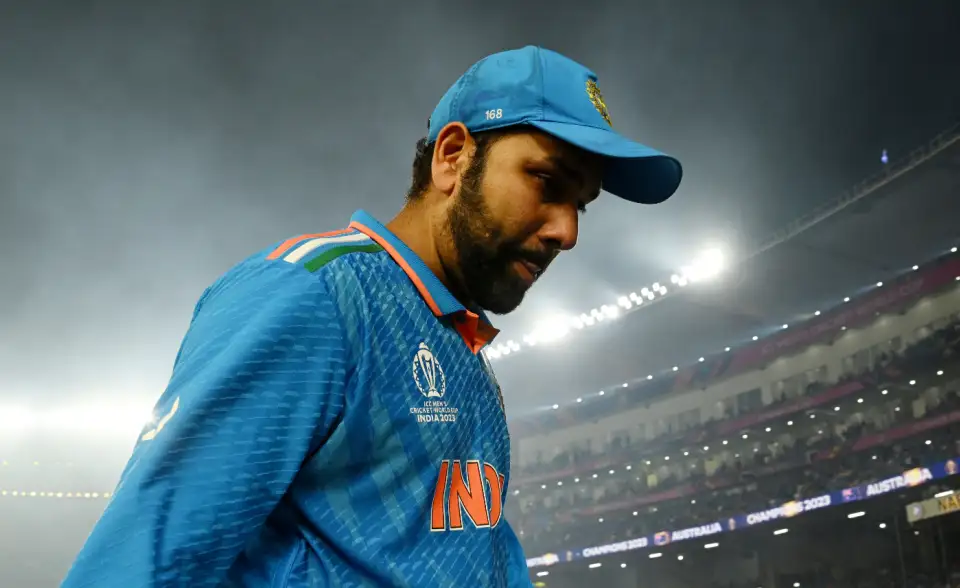
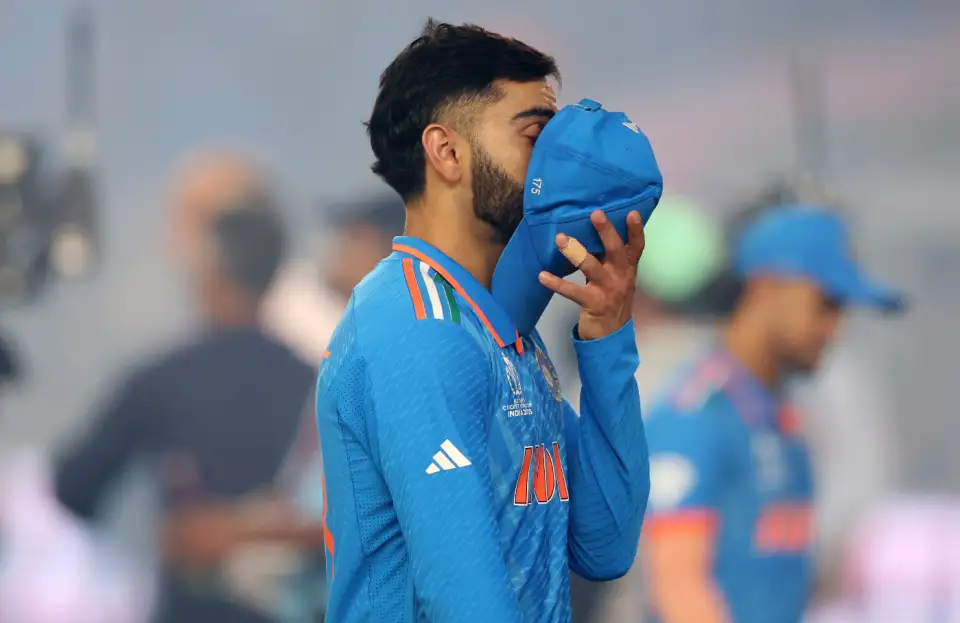
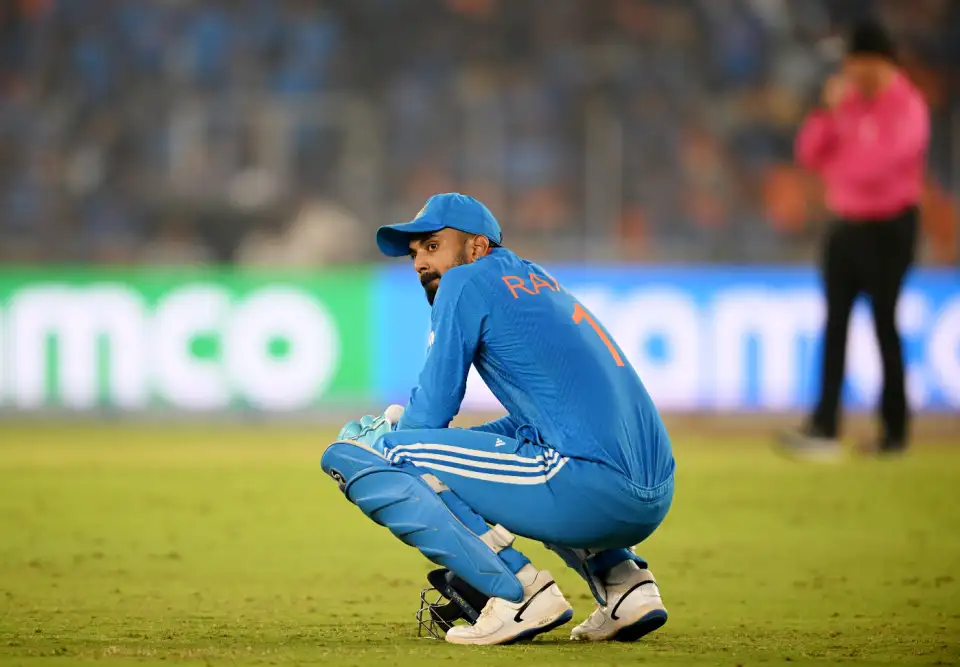
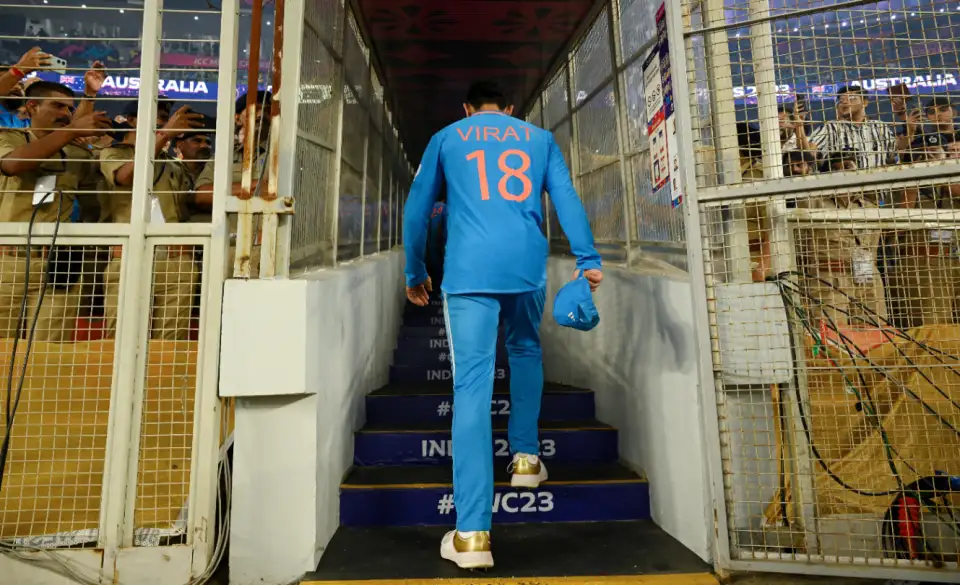
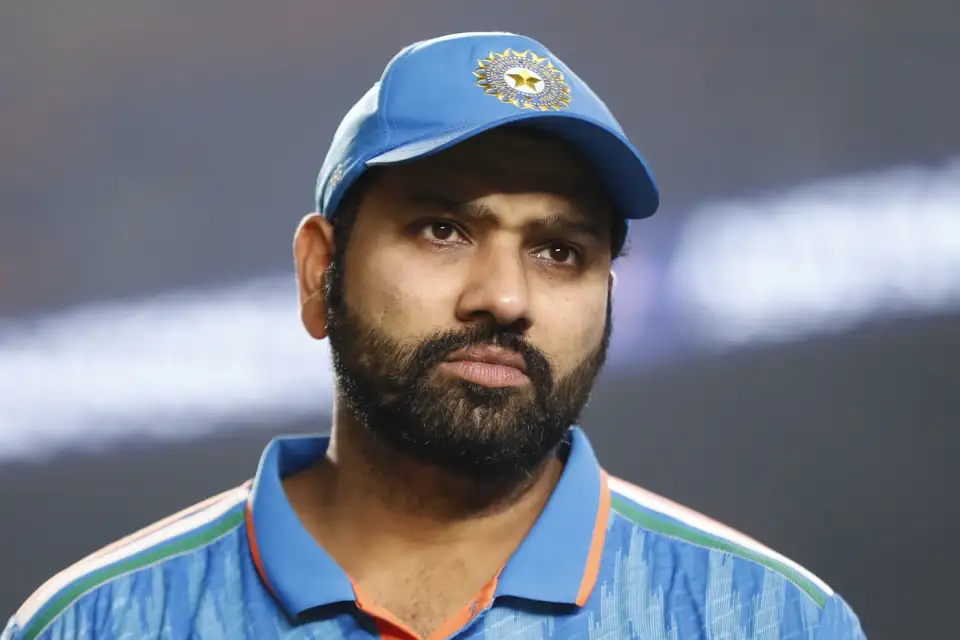
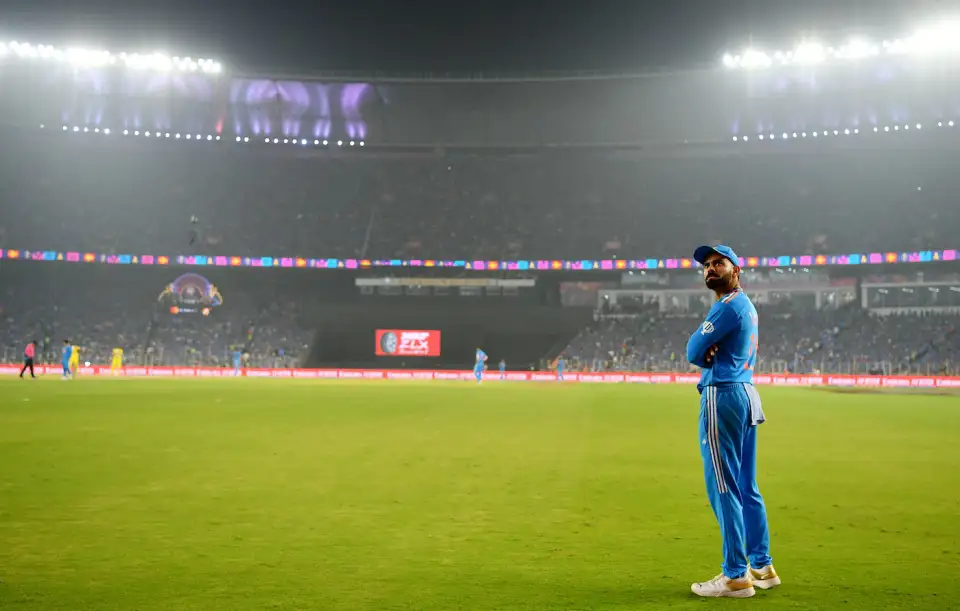


Great Point to point analysis! 🙌🏻
Very well documented. I must say Australia has a long- held reputation for producing their best game when it really matters, and beating India in its own backyard in front of massive crowd. Well deserved winners 🏆. hard luck India and all the best for next edition.
Every moment covered with minute details and to the point analysis.